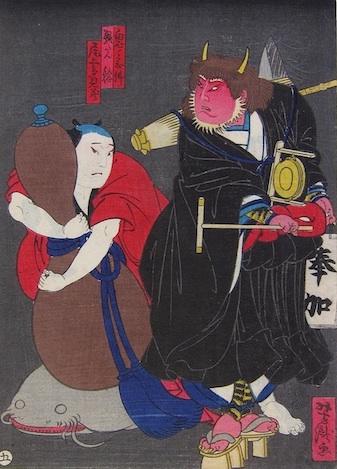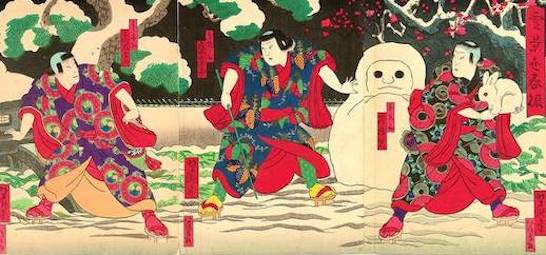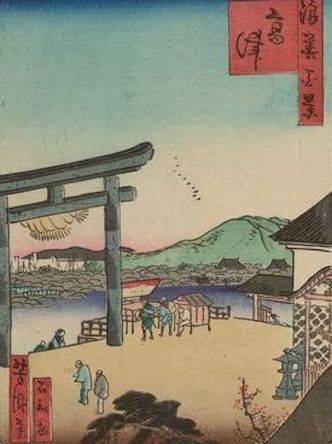Utagawa Yoshitaki and Japan Art: Oni Demon, Shinto, and Snowman
Lee Jay Walker
Modern Tokyo Times

The Japanese printmaker Utagawa Yoshitaki (1841-1899) produced countless prints throughout his lifetime. His print above of the Oni is a fine example of the utter mystery of some of his prints. Therefore, the Oni (demon) and the Namazu (giant catfish) in the same print are mysterious from several angles.
The Toshidama Gallery says: “The figure on the left holds a giant gourd – this was known to be one of the few magical ways to quell the much feared catfish which in the print is lying compliantly underneath. The legends of Japan say that earthquakes and tsunamis are caused by the writhing of a giant catfish (namazu) under Fuji. There were popular prints of the quelling of the catfish (Namazu-e) which appeared after natural disasters such as the Ansei earthquake of 1855. One reading of the print is that the actor on the left is obliged to hold the gourd on the catfish whilst having to confront the feared Oni demon on the right – caught between the devil and the deep blue sea as it were.”

Interestingly, the Namazu appears unconcerned by events. However, the Oni looks angry and powerful. It could just be that the Namazu knows that the Oni is too much for this brave individual who is trying to stop calamity from happening.
The following print above focuses on kabuki actors playing children in the snow. Accordingly, a snowman and the snow rabbit are central to this playful print.

The British Museum says: “Pupil of Utagawa Yoshiume (q.v.). Earliest work c. 1854. With Hirosada (q.v.), one of the two leading designers of ‘chuban’ actor prints in Osaka during the 1860s and 70s. Also known for paintings of beauties in an Utagawa-influenced, but recognizably Osaka, style.”
In contrast to the first two prints, Yoshitaki focuses on a delightful Shinto compound that attracts the faithful. Shintoism is the indigenous religion of Japan. Accordingly, shrines can be found by the roadside, in the middle of an ordinary street, on top of mountains – to important historical compounds in cities, towns, and villages where they take the central stage for the Shinto faithful.

Modern Tokyo News is part of the Modern Tokyo Times group
http://moderntokyotimes.com Modern Tokyo Times – International News and Japan News
http://sawakoart.com – Sawako Utsumi’s website and Modern Tokyo Times artist
https://moderntokyonews.com Modern Tokyo News – Tokyo News and International News
PLEASE JOIN ON TWITTER
https://twitter.com/MTT_News Modern Tokyo Times
PLEASE JOIN ON FACEBOOK